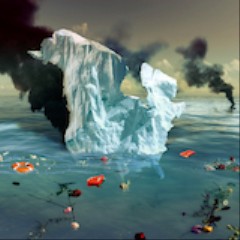A bloom of cyanobacteria, a different toxic algae, on the water near Kotzebue. A. catenella is largely invisible. Photo courtesy of Alex Whiting
Tipping Point covers environmental justice stories about and, where possible, written by people in the communities experiencing the stark reality of our changing planet.
Advertisement
A water sampler deployed from the research vessel Sikuliaq during Anderson's 2020 expedition to the Arctic. Photo by Woods Hole Oceanographic Institution
Advertisement
Advertisement
A map from Anderson's study showing the extent and concentration of toxic A. catenella cysts in the Chukchi and Beaufort seas.
Advertisement
Alex Whiting takes a water sample off the coast of Kotzebue, Alaska. Photo courtesy of Whiting
